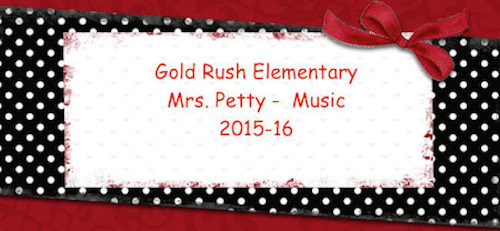In our third week together, our Musical Headline was Rhythm. We were able to incorporate some fun, Halloween songs and activities as a part of our Rhythm work.
- In the week closest to Halloween, Kindergartners learned a song about pretending, called "I Know There are No Witches". They helped create additional verses thinking of other Halloween creatures that are part of the fun of pretending with Halloween. They also explored movement qualities and steps of various 'Halloween' creatures. We also played a singing/guessing game, "Black Cat". The week in this rotation not as close to Halloween, Kindergartners learned a poem (speech piece) which is a traditional rhyme, "Engine, Engine, Number Nine." We used a graphic notation for sound with train whistle messages and learned that rhythm is created by interrupting sounds - erasing part of the line - to create rhythm patterns. We played a train traveling games where each student got to be the leader of their train line and travel to various 'train stations' around the room and play a rhythm pattern from the poem. Students were introduced to the cabasa (instrument) for our train track travels.
- In the week closest to Halloween, First Graders and Second Graders each learned one traditional seasonal song which we added instruments to. First Graders learned, "We are Jack - O - Lanterns." For this they played a beat bordun on parts of the song using xylophones, and on the "boo, boo, boo" played melodic patterns on the glockenspiels - Low/Middle/High and High/Middle/Low. Second Graders learned the Kentucky folk song, "Skin and Bones". They also played a beat bordun for part of the song and a melodic ostinato for part of the song. Everyone got a chance to play one of our new Contra Bass Bars (very low and very cool!) Also in the week closest to Halloween we did a movement activity called a Trip to the Halloween House, which involves imagination and moving like various Halloween characters (e.g. galloping with the Headless Horseman, floating with a ghost, stretching like a black cat, rolling like a pumpkin). We also played a singing/listening game: Who has the Pumpkin? The other week, 2nd graders learned a new singing game, "Cut the Cake" which has the same rhythmic elements (tah, tee-tee and rest) that our "Autumn is Here" song has. We also practiced rhythm reading and rhythm dictation using stick notation. First graders focused on tahs and tee-tees (quarter notes and pairs of eighth notes) in movement and notation - reading and writing 4 beat patterns.
- Third Graders worked to learn 3 songs with 3 notes on the Soprano Recorder so that the recorders purchased for home practice could be sent home. Hooray! All classes accomplished this. We will continue to work on recorder technique during music class and learn more notes and songs, but this was a huge milestone. We learned "It's in the B-A-G", "French Song" (which is really the A section of Au Claire de la Lune), and "Old Tom White". As you practice at home, remember to log in your practice time on the blog page called Practice Logs. Next rotation we'll review these three notes with new songs and add our next note.
- Fourth Graders learned about the traditional note and rest names in this rotation. Although some students knew some of the 10 symbols by their 'real' names and could also tell how long they last (their value). No student scored 20 out of 20 on the pre-test. So, good news: everyone had something new to learn. Students learned why notes and rests have the traditional "mathematical" name they have based on an object lesson: Mrs. Petty's famous BROWNIE Lesson. In addition, we played some games and did some activities to help cement all of this new information into our thinking before re-testing at the end of the rotation. Those that scored 20 out of 20 this time around have shown that they have grasped the information. Those that did not received their papers back to study the few they still need to learn. We'll keep working on it. To apply this knowledge, we also started on a creative project of arranging given notes (or trading for silence - rests) into measures that fit the time signature. In the coming weeks students will perform their creations and learn to recognize their rhythms when they hear them (Stand Up if You're the Composer).
- Fifth Graders focused on reading rhythms in simple time (4/4) and using rhythms to create speech patterns. We played a challenge/elimination game called Double Trouble in which students had to perform an 8 beat pattern by clapping and saying their rhythm and their right hand neighbor's pattern. The beat was continuous, so as soon as one person completed their eight beats, the next person began. Each rhythm is doubled - as it is read by one person as their last 4 beats, and then again as the next person's first 4 beats; and each person reads double measures - so Double Trouble. This game afforded the chance to focus on reading rhythms with fluency. In addition, 5th graders learned some beat patterns based on the work of Keith Terry's body rhythms: 3+5, 5+3 and 7 (ask for a demonstration from your student). This was paired with a body percussion piece from Rhythmische Ubung (rhythmic exercises) with 3 levels of body percussion. This very complex rhythm was introduced using a seasonal poem. Once the pattern was learned, students extended the composition by creating contrasting sections with speech based on particular 2 best rhythm blocks. This collaborative composition culminated by sharing out the new parts, woven together with the original poem/rhythm as the A section in a Rondo form. A B A C A D A ....
- In the next rotation, "Week 5" the musical focus will again be Melody and Pitch. Fourth and Fifth Graders - get ready for a second chance at the 50 in 5 Challenge
